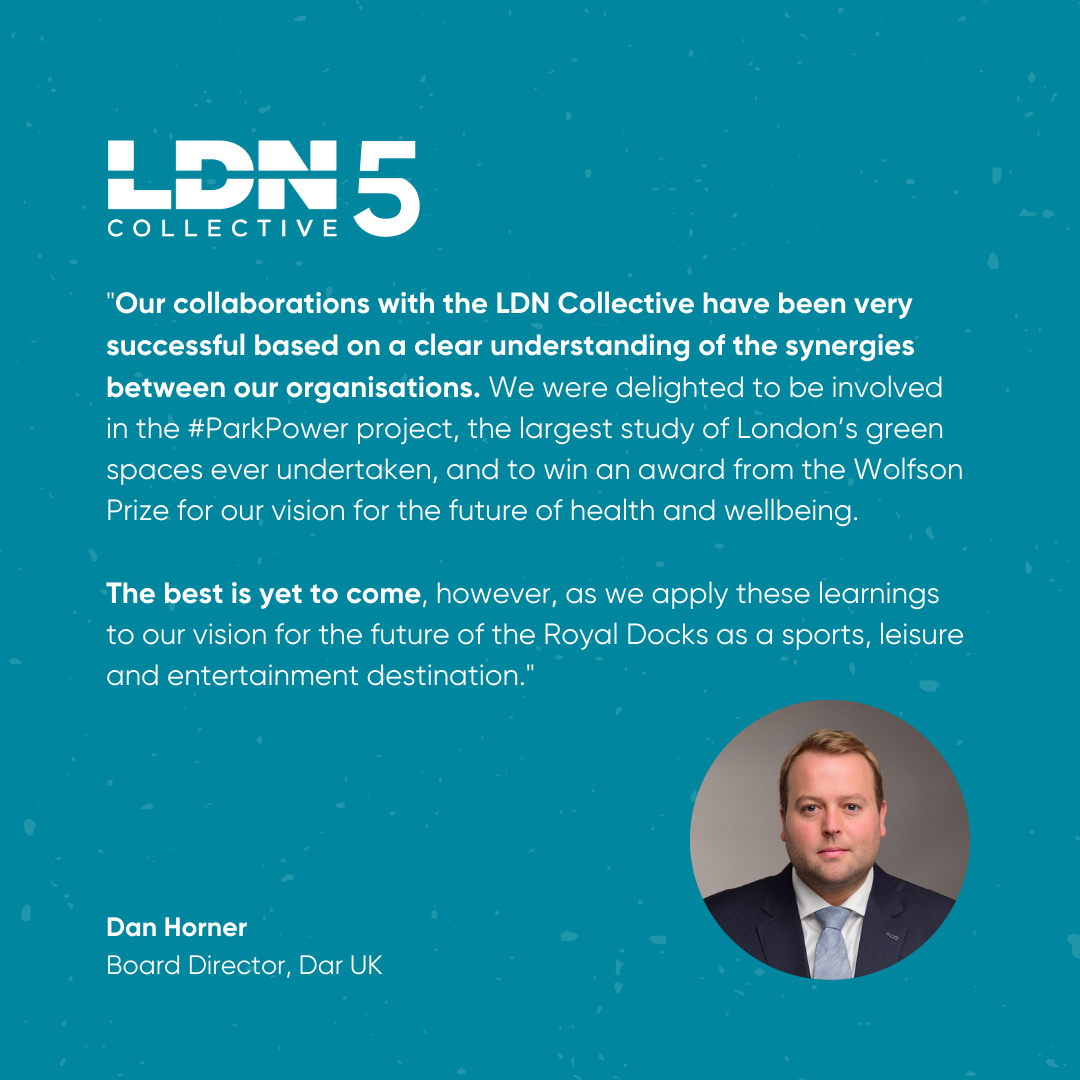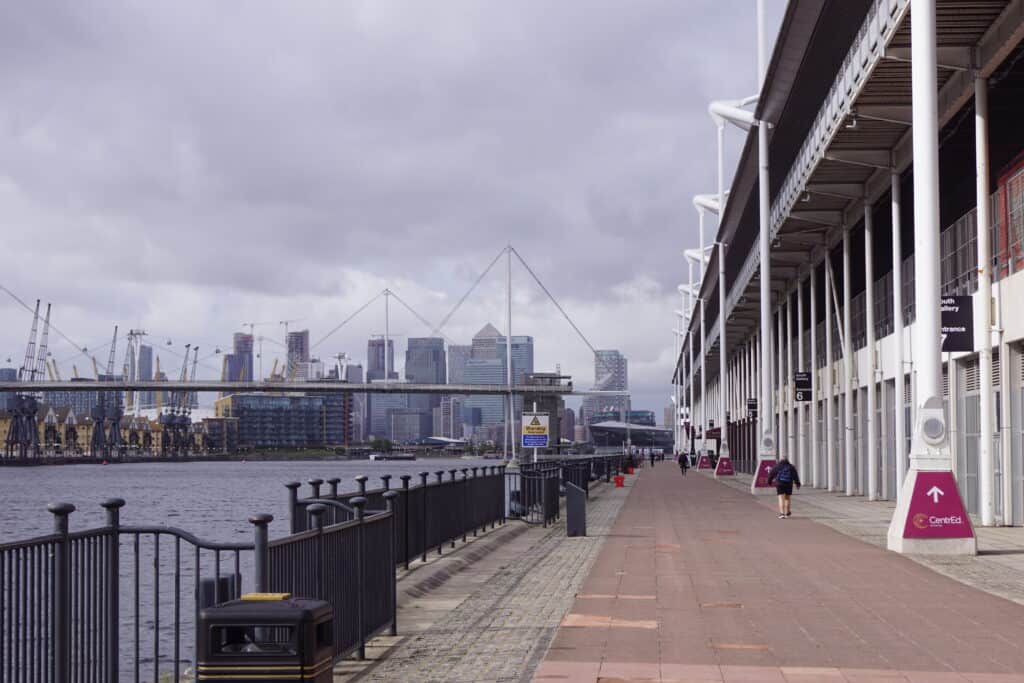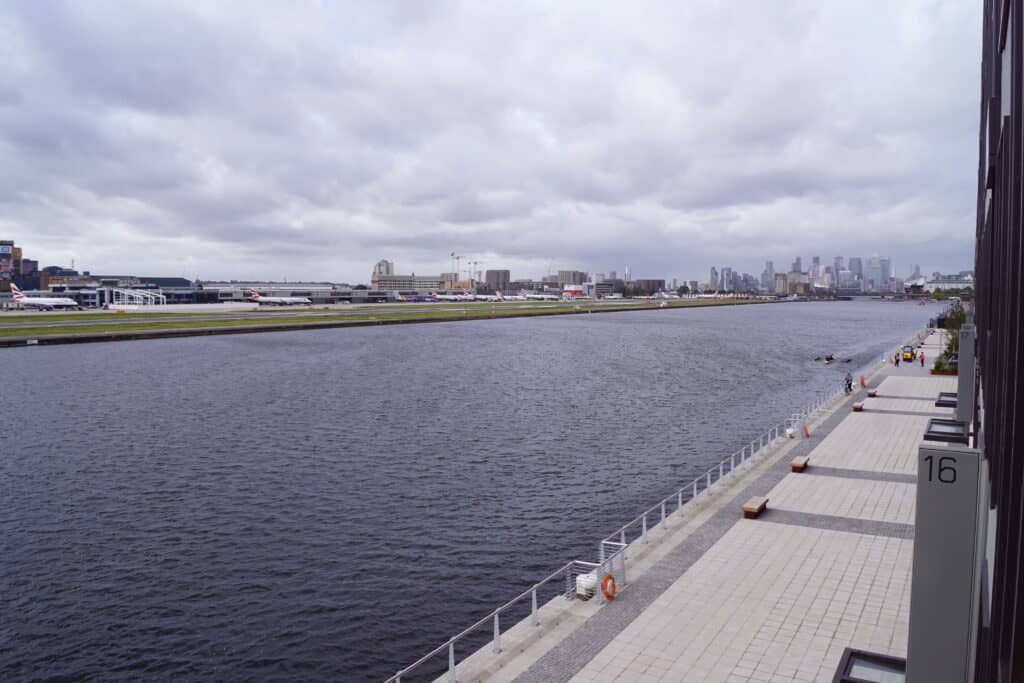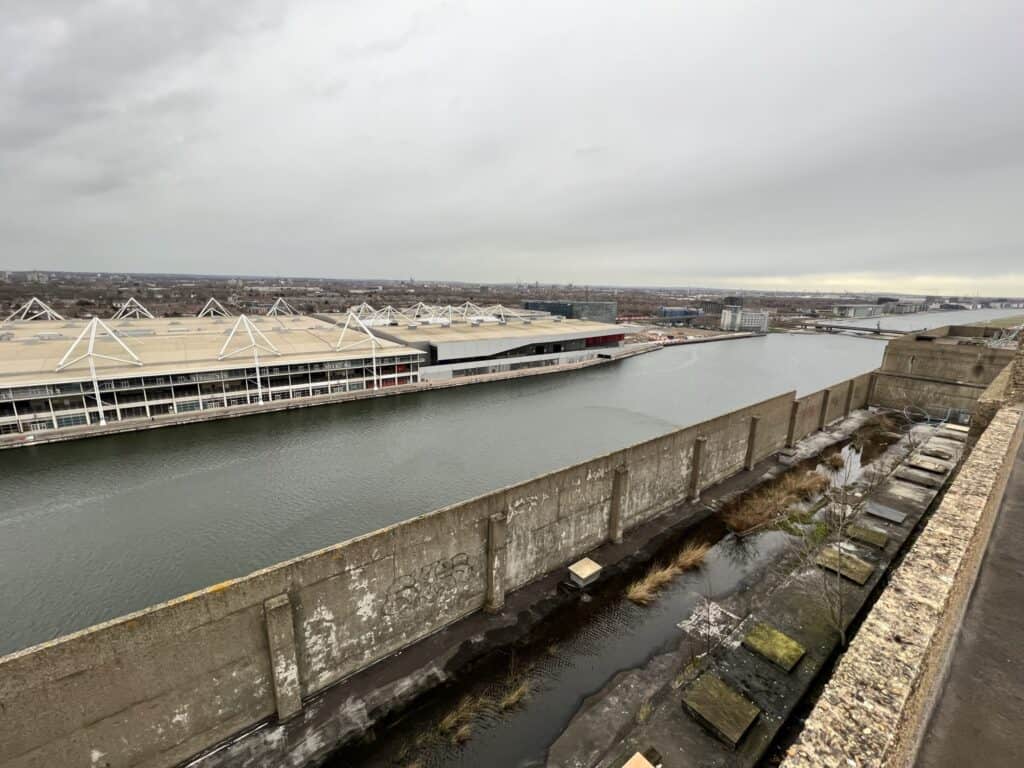The LDN Collective and Dar have unveiled a new vision for the Royal Docks to transform the area into a globally recognised waterfront destination for sports, leisure and entertainment and host a major motorsport event.
The concept extends the width of the existing 10m embankment by 20m for a length of 2.7km along the Royal Victoria and Royal Albert Dock embankment from ExCeL to the University of East London, creating 48,140 sqm of prime waterfront land.
The water’s edge would be activated by a series of floating modules, combining to provide further community space along the embankment edge and 70,790 sqm (GFA) for a wide variety of functions, from boutique hotels and restaurants to libraries and pocket parks.
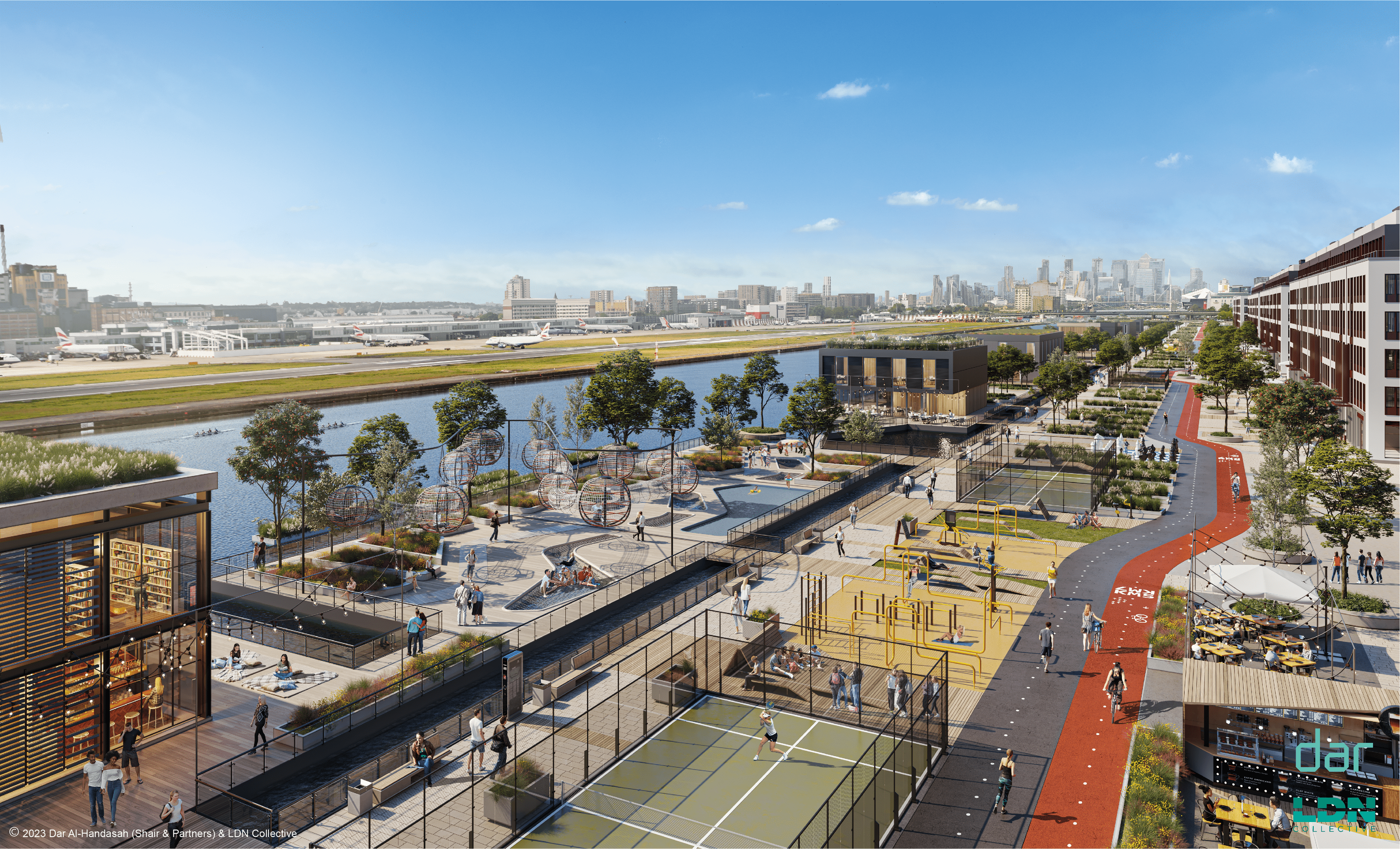
The Royal Embankment
Movable and flexible in configuration, the 28 modules offer 22 revenue generating units and six high quality floating parks with different uses, from spaces to relax and socialise, to playgrounds, learning areas, adventure zones and exercise spaces.
For fifty weeks of the year, London’s new waterside boulevard would be an ‘eventscape’ programmed to host events and activities with a cycling and running track encouraging healthy and active lifestyles. As the race week approaches, the embankment’s linear park can be disassembled to reveal the race track, while floating units would be reconfigured to provide grandstands, food and beverage outlets and entertainment facilities.

Concept masterplan
A major motorsport event in this location would offer a waterside street circuit with high speed, long duration and full throttle sections with heavy braking zones to maximise over-taking. The 5,868m circuit would have 22 corners, an average speed of 204 kph and an anticipated lap time of 1’42.1.
The design incorporates a mix of floating and non-floating grandstands with capacity for over 95,000 people and a unique pit-lane would use ExCeL’s first floor servicing and loading deck for increased viewing opportunities.
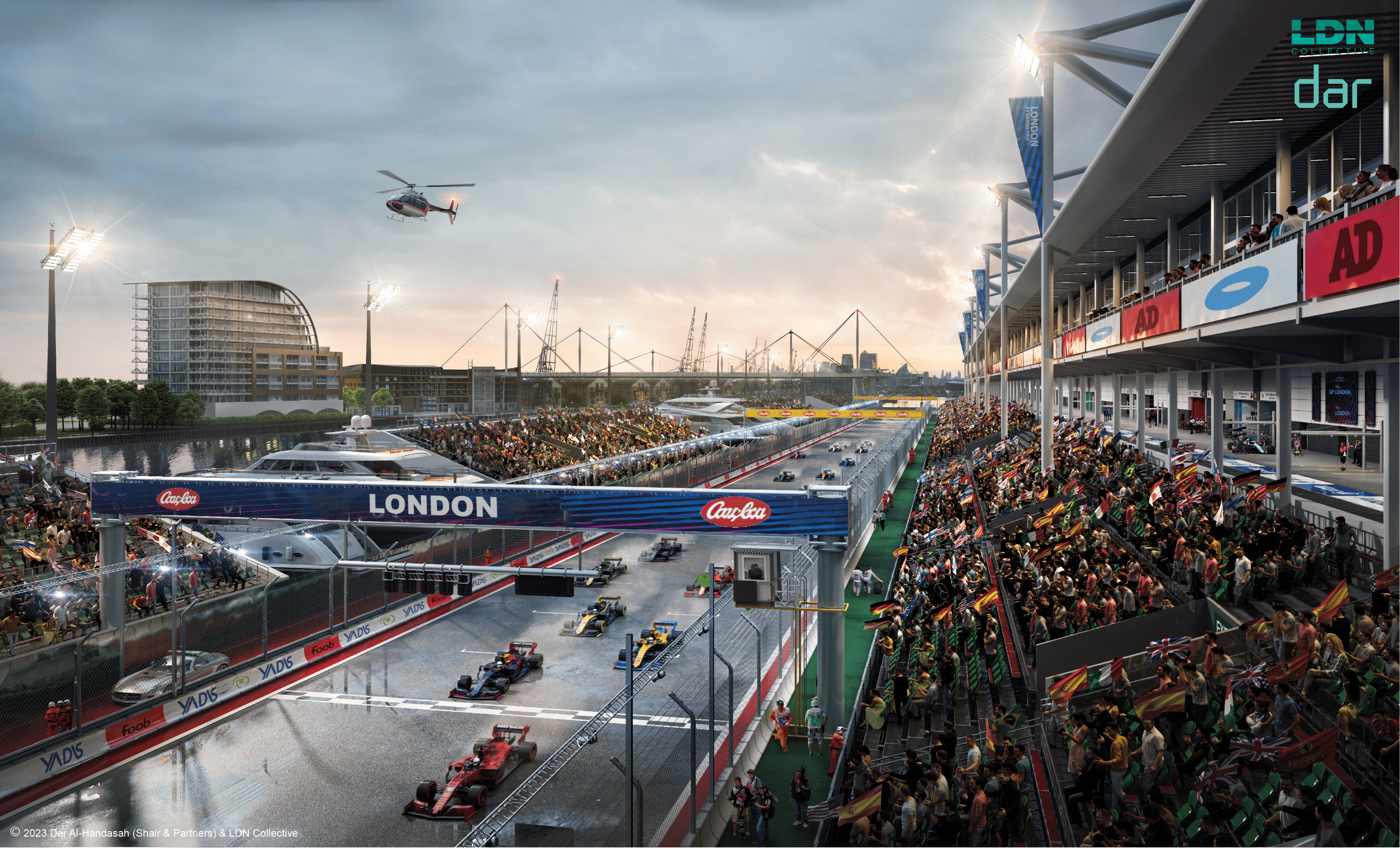
Race Day
Max Farrell, CEO of the LDN Collective said, “This vision could do for the Royal Docks what the Olympics did for Stratford and the Lee Valley. By extending the promenade we are creating a flexible eventscape and by creating floating commercial uses we are making the proposal financially viable and deliverable, without the taxpayer footing the bill.
“We know that there is interest in hosting major motorsports events here and we have designed a track that meets all of the requirements and regulations. We have discussed the proposals with the GLA, who are developing a water strategy and planning framework with Newham Council, which we hope to align with. With or without motorsport, these proposals are transformational and would be a huge boost to London and the UK globally.”
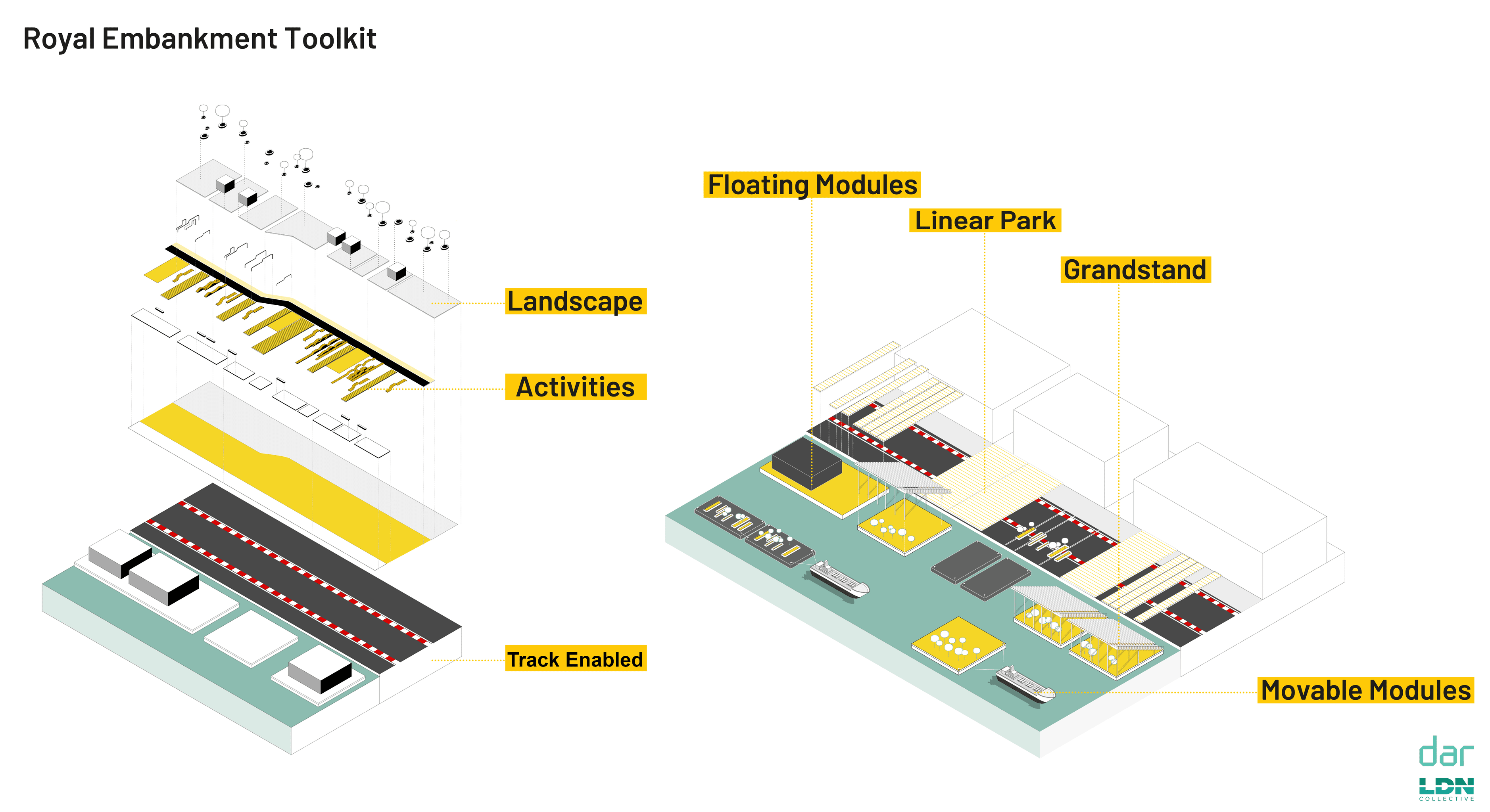
The Royal Embankment Toolkit
Dan Horner, Director of Urban Design at Dar said, “It’s apparent for anyone visiting the Royal Docks that the water is underutilised, but has huge un-tapped potential. We have approached this large, contained and clean body of water as a platform which can be reconfigured using floating modules, creating a new family orientated leisure and events destination.
“Although floating buildings, structures and spaces are a relatively new concept within the UK, there is a growing number of precedents, notably in Europe, which have been highly successful and cost effective. We believe this is an exciting and viable solution for activating the Dock, making it a world class destination.”
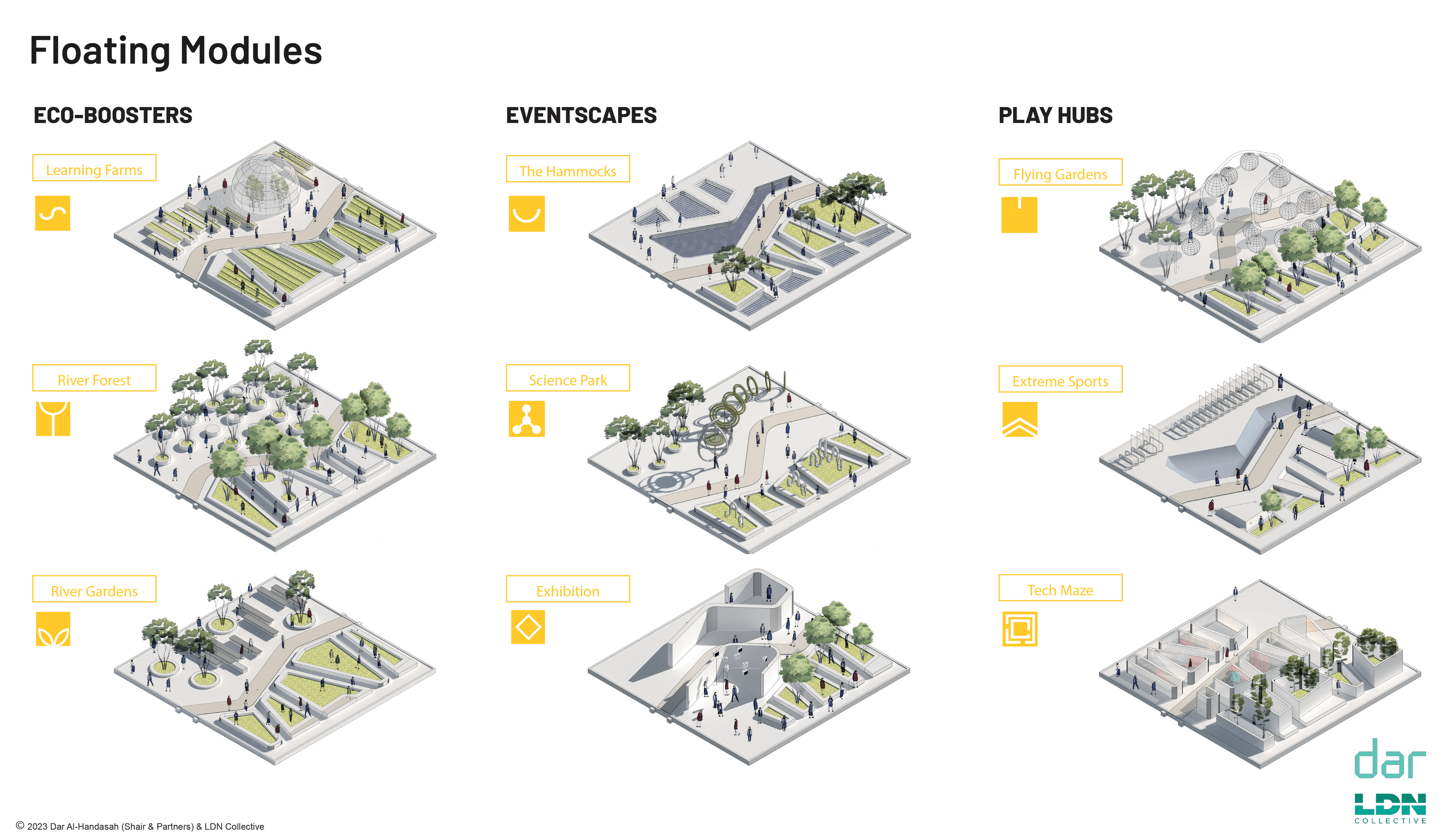
Floating Modules
This vision for the northern embankment of the Royal Docks is intended as a catalyst for investment in the area combining mixed use facilities with social infrastructure for local residents and the community. The Royal Docks offer 485 hectares of land, 100 hectares of water and almost 12 miles of waterfront. Committed investment in the designated opportunity area includes the £3.5bn regeneration of Silvertown Quays into a new innovation quarter for global brands and businesses, more than £10m to establish the London Institute of Transport Technology on Albert Island and £500m rebranding of London City Airport as a hub for business and leisure with expanded global links.
The proposal advances over 40 years of regeneration efforts for the area since the Royal Docks closed to commercial traffic in 1981. The Victoria Dock opened in 1855 with the Albert Dock following in 1880 and the King George Dock in 1921. Efforts to regenerate the docks had already begun in 1976 with the creation of the Docklands Joint Committee, followed by the London Docklands Development Corporation in 1981. City Airport and the DLR were completed in 1987.
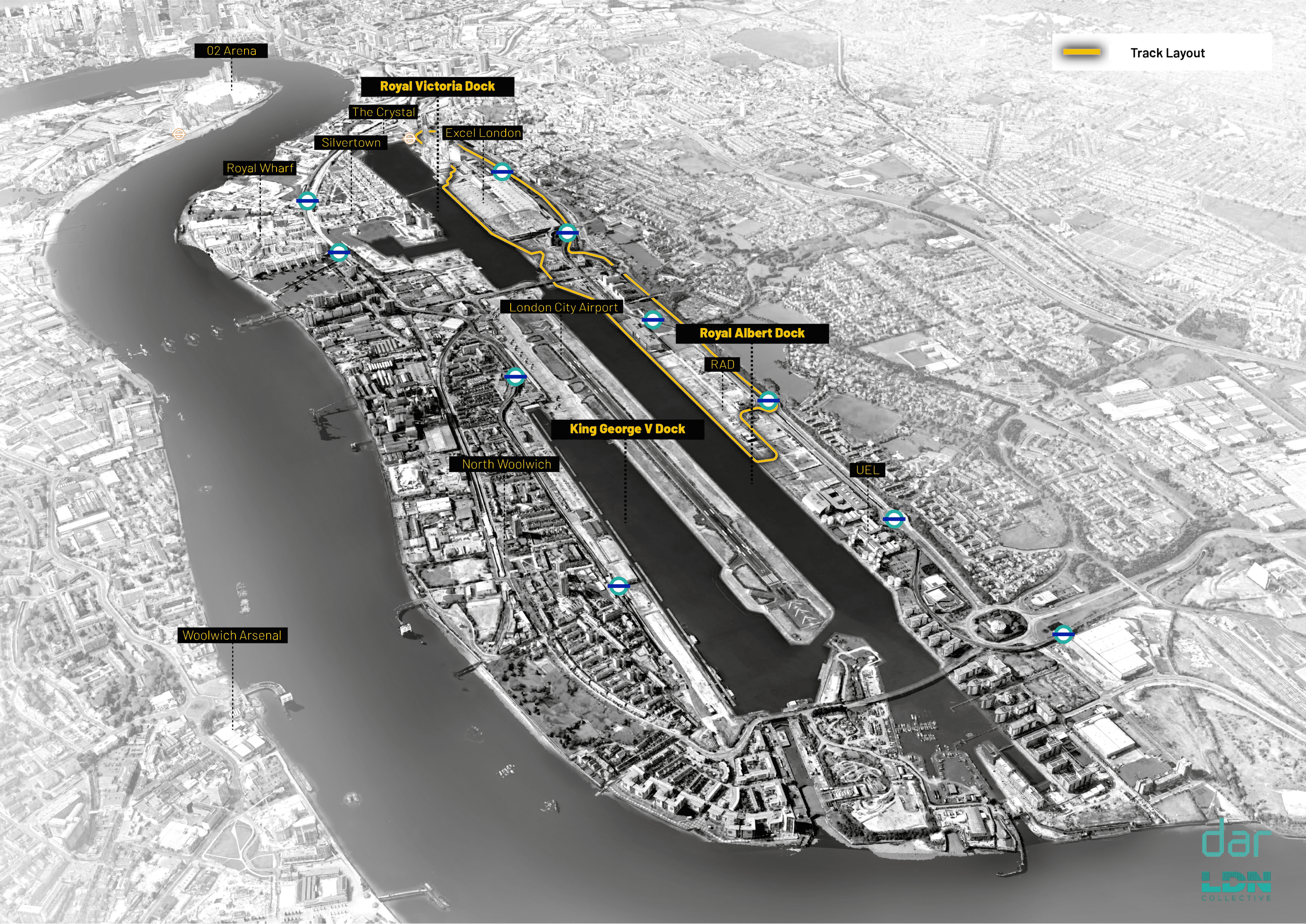
Context Map
Here is a testimonial from Dan Horner, Board Director at Dar UK. Please do get in touch if you would like us to offer similar support.
